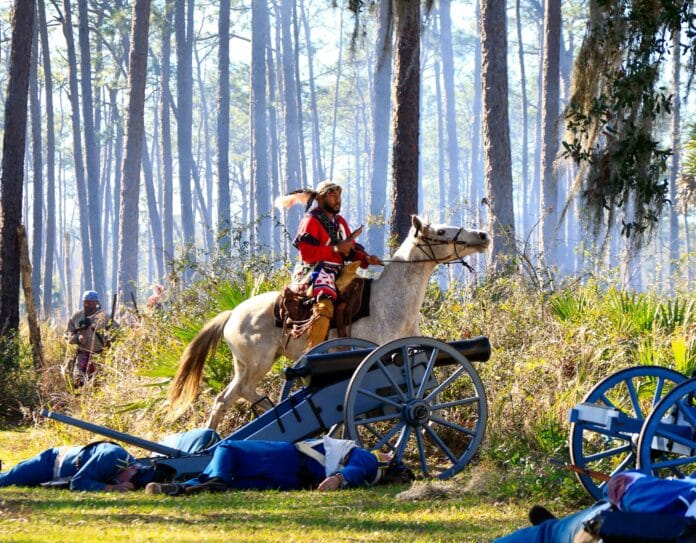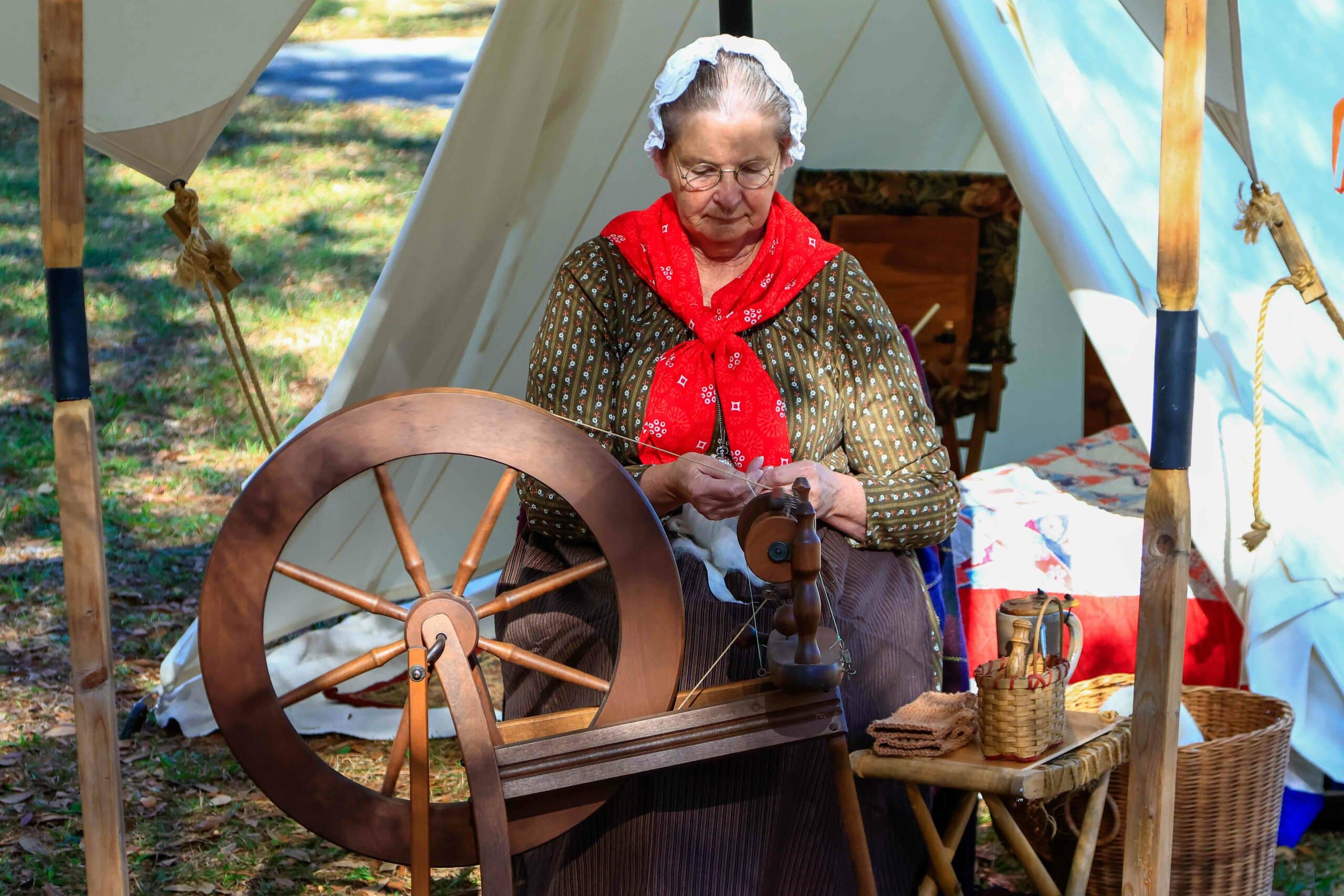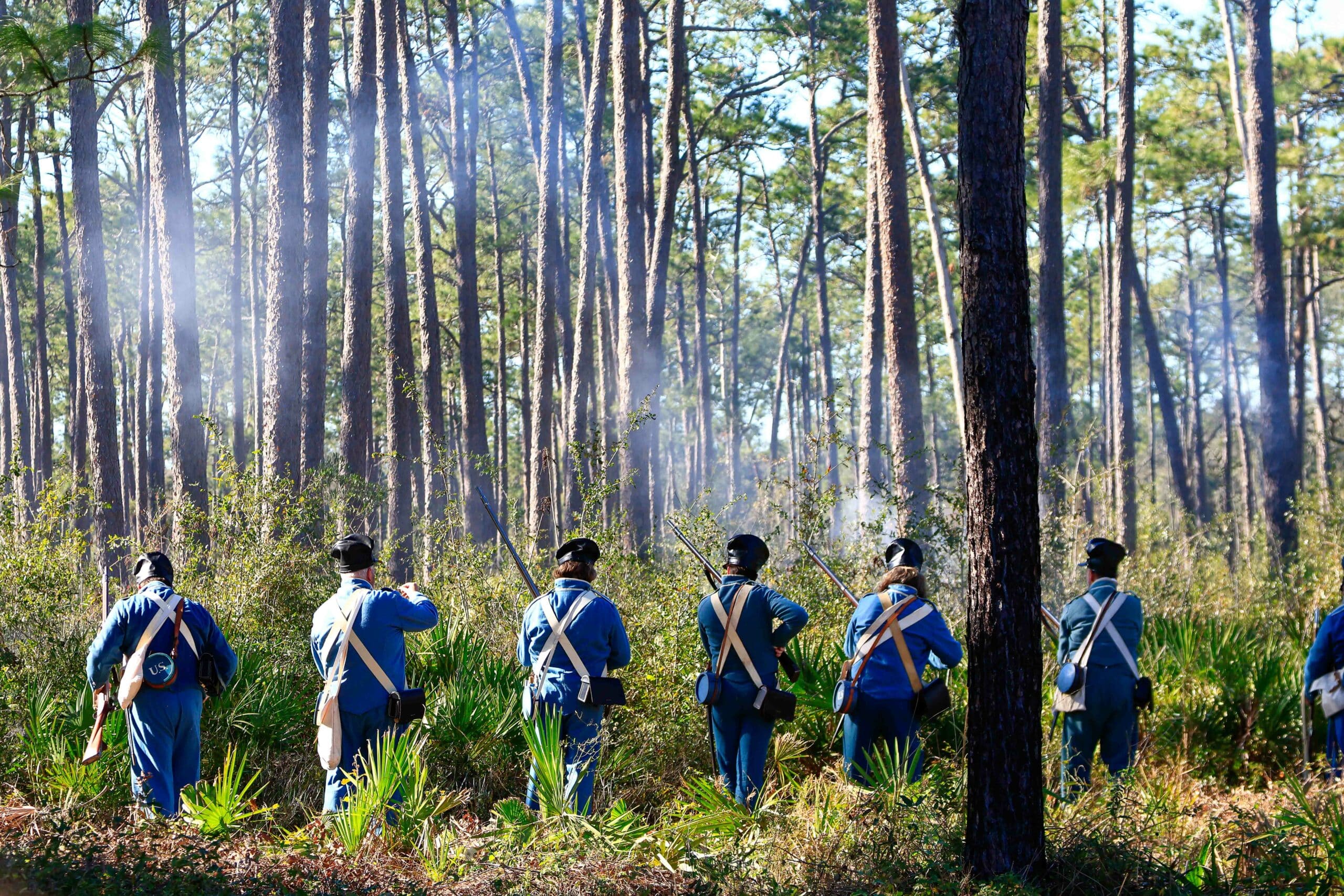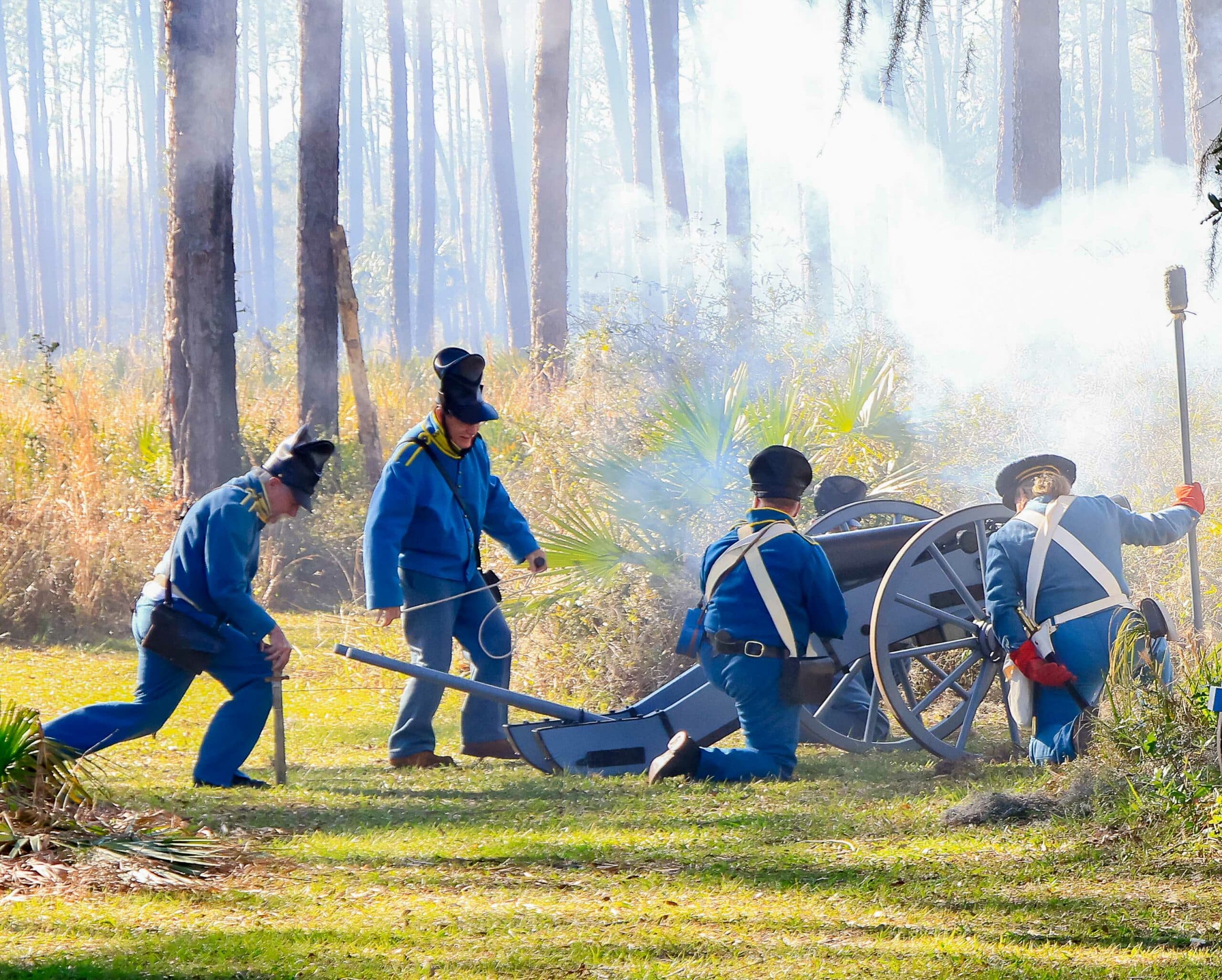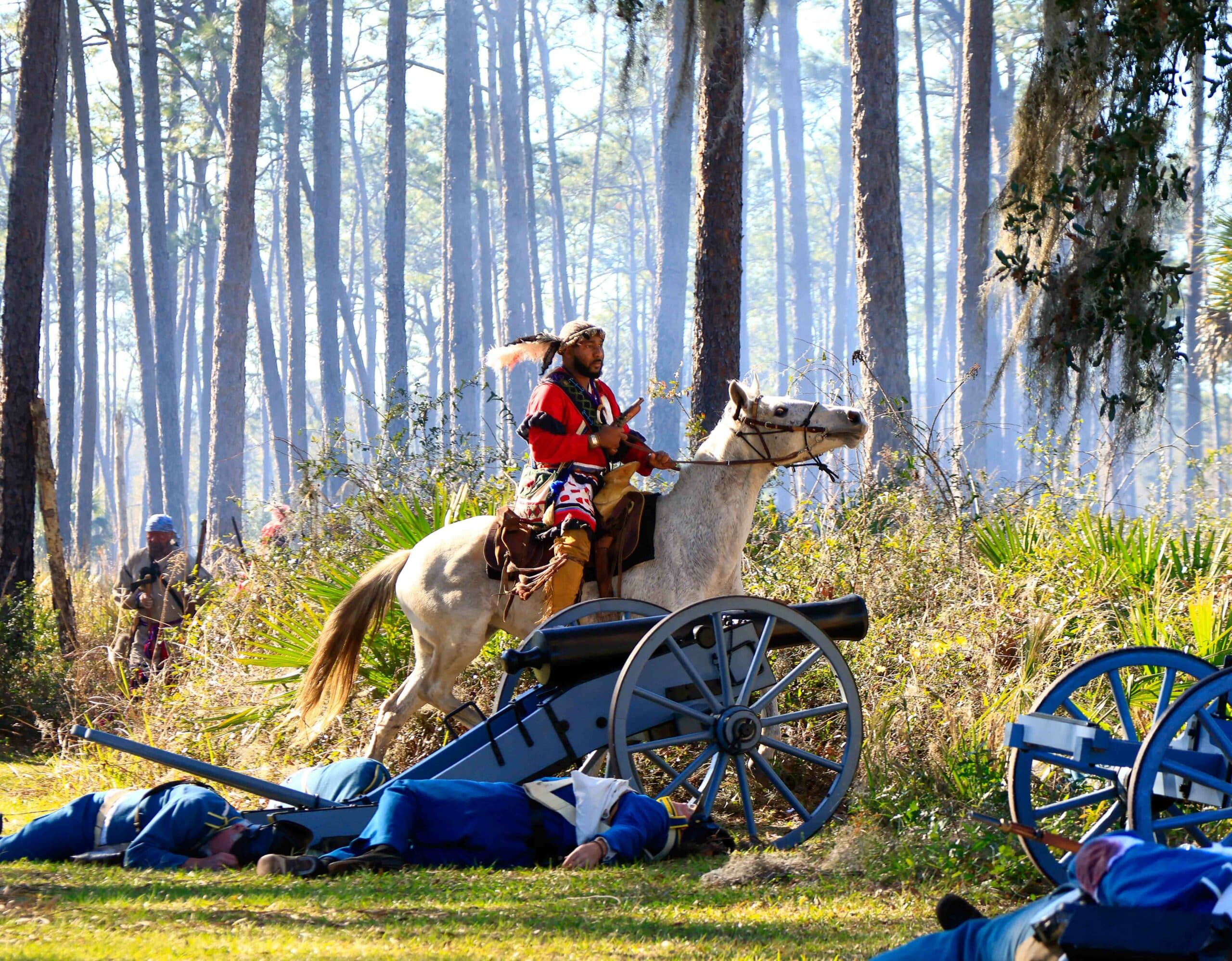By MARK STONE
Bushnell, Florida – Reenactors, history buffs, and spectators from central Florida and beyond converged on the Dade Historical Battlefield State Park on January 7th and 8th for the annual reenactment of the “Dade Massacre.” Reenactments of the battle have been presented at the park since 1980 as a way to present a “living history” of the battlefield to the public. The original battle was fought at the same site on December 28, 1835, between the US Army and the Seminole tribe and became one of the primary triggers of the Second Seminole War.
Walking into the park was like walking back in time to visit central Florida in the early 1800s. Men and women sat around campfires in front of white tents like those used at the time. Everyone was dressed in period-correct clothing, doing their best to recreate the life of early settlers. Some, known as “sutlers,” operated stores, selling supplies typical of the period to both reenactors and visitors. Others gave demonstrations such as using a spinning wheel to create yarn or making leather goods by hand. Meanwhile, period-dressed children ran laughing through the encampment, playing games and enjoying authentic toys from the early 1800s. I found myself briefly believing that life in this period was pretty peaceful. But that was about to change. Like many days must have been on the frontier in the early 1800s, the peace was an uneasy one. The settlers of 1830 had been increasingly at odds with the Seminole over land and food. Things had gotten to the point where the settlers petitioned President Andrew Jackson to relocate the Seminole to the Oklahoma territory.
Just a few hundred yards from the quiet settlement, a crowd of spectators gathered to watch reenactors portray a detachment of US Army soldiers marching north on a dusty trail surrounded by tall grass and palmetto. Pulling a single canon, their mission was to reinforce Ft. King near Ocala, which had come under the threat of an Indian attack.
As the column marched single file, a single shot rang out. The officer at the head of the column (portraying Major F.W. Dade) fell dead from his horse. Local reenactor Ross Lamoreaux portrayed US Army Captain G.W. Gardiner, one of eight officers in the detachment. Lamoreaux quickly took command of the detachment, ordering the soldiers into defensive positions while ensuring the cannon was positioned in the direction of the as-yet-unseen attackers.
A barrage of gunfire rang out from the palmetto bushes as reenactors portraying Seminole Indians moved unseen in the scrub. Only a rise of smoke from their musket fire indicated their approximate position. Meanwhile, the US soldiers desperately returned fire into bushes, firing blindly, hoping to stop an unseen enemy. As the canon roared, soldiers up and down the line began falling to the ground. Smoke from the gunfire filled the air, obscuring anything beyond a few yards out. As in the actual battle, the soldiers fell back during a lull in the gunfire and began building a triangular breastwork out of logs. Half of the soldiers in the detachment were already either wounded or dead.
A mortally wounded Captain Gardiner continued to direct the young soldiers amidst the panic and chaos of a losing battle. A second volley of shots exploded out of the palmetto, now much closer than before. With only a few soldiers left alive, dozens of Seminole Indians emerged from the brush, advancing on the breastworks.
Riding out of the smoke on a large white horse with pistol drawn was reenactor Matthew Griffin, recreating the persona of Seminole Indian Tustenugee Lustee, which means “Black Warrior.” (The original Tustenugee Lustee was a runaway slave who joined the Seminole tribe in the early 1800s, as did many others like him).
Soon, every reenactor portraying a US soldier lay either dead or wounded as the Seminole reenactors foraged among the soldiers on the ground for weapons or ammunition. The scene was absolutely surreal as the Seminole walked from the dead soldiers back into the lingering haze of smoke and quickly disappeared into the palmetto brush.
Not a whisper could be heard among the spectators, who were clearly caught in the moment as complete silence returned to the battlefield. Just as each spectator was left alone with their thoughts, the sound of a lone bugle playing “Taps” drifted over the battlefield. It was a tasteful and appropriate ending, honoring both US soldiers and Seminole Indians who died 187 years ago on this very ground.
For more information on the battle or to get involved with reenacting, contact the Dade Battlefield Society on Facebook www.facebook.com/Dade.Battlefield or www.dadebattlefield.com.

